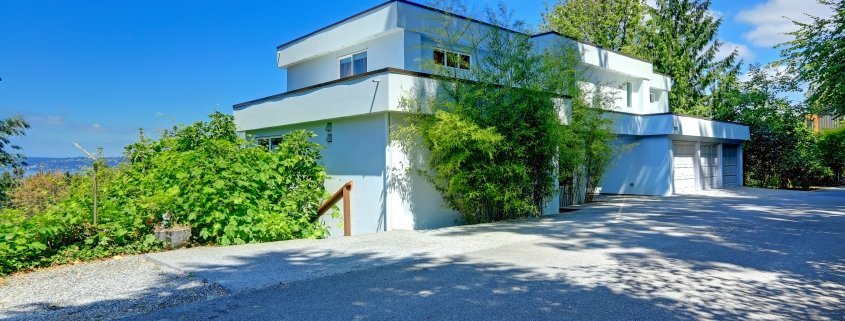Getting a pre-purchase house inspection when the home has a flat roof
When you think of 70s houses, what comes to mind? Groovy wallpapers, crazy colour combinations, and patterned carpets?
While all these are true, another lesser-known feature of many 70s homes is the flat roof. Flat roofs were considered modern and stylish back in the day, and while they still look great (unlike patterned carpets, which haven’t really stood the test of time!) they can cause some problems for homeowners as time goes by.
Now that it’s approaching almost 50 years since the 70s, a lot of houses built then are getting to the point of needing roof repairs or a replacement. If you’re considering purchasing a home with a flat roof, it’s a good idea to know all about the condition of the roof and how you would go about replacing it if needed – as well as why you need a pre-purchase house inspection.
Why flat roofs can cause problems
When I say flat roof, no roof is actually entirely flat. Every roof needs fall to ensure that rainwater and debris have somewhere to flow to. However, some homeowners find issues with a roof that isn’t pitched enough, as water can pool on the roof and leak into the house. A leaky home is very worrying – not only can water cause damage to the interior of a building, it isn’t great for your health either. If you’re worried about your home’s roof or the roof of a home you might be purchasing, have a look at one of our earlier blogs all about roofing red flags.
Changes in building codes
Houses with flat roofs were likely built in a time when building codes were a little different. In the 70s, roofs only required 1° of pitch/fall, whereas now iron roofs need to have a minimum of 3°. This can cause some grief when it comes to replacing a flat roof. As old roofs don’t comply with current building code regulations, you can’t replace like for like. This means you would need to increase the pitch of the roof to comply with the current building code and the roof manufacturer’s warranty (which would require a building consent). This would likely carry additional costs, such as new detailed plans of how the increase in pitch is to be carried out etc. All in all, this can add up and give your wallet a bit of a hit!
Repairing or replacing?
If your roof is damaged and leaking, it’s crucial to do something about the problem quickly – but a lot of people find it intimidating to replace a whole roof. After all, it’s a big and costly job! However, it’s becoming clearer by the day that it’s often better for your wallet, and sanity, to invest in a full roof replacement.
The reality is that no roof lasts forever. No matter the house, the roof will need fully replacing eventually – if you get 50 years out of an iron roof you are doing well. The cost of replacing a roof is obviously dependent on size – an average 3 bedroom house can be anywhere from $10-20k, but can be more expensive for an older low pitch roof.
While the cost of replacing a roof is high, it’s a cost you have to consider against the annoyance of constantly patching up leaks. Individual repairs will always be cheaper in the short-term, but they’ve become more expensive in recent years and can really add up if you’re constantly having to get problems fixed. The health and safety costs for workers who are working on a roof (i.e. the scaffolding) are pretty much the same regardless of whether they’re working on one section or replacing the whole thing. If it’s looking like the roof will need a lot of repairs, it may be better in the long run to commit to replacing it all instead.
Before you consider purchasing a house with a flat roof, the first step is to find out when it was last replaced. If the roof is approaching the 50 year mark, it’s likely going to need replacing while you’re the owner of it – which is something to take seriously and to make sure you’ll have the budget for.
Getting a pre-purchase house inspection
If you’re wanting to make an offer on a property, it’s vital that you have the home properly inspected before you sign above the dotted line. A home is often the biggest investment any of us will ever make, so it’s important to make sure it’s not going to give you any trouble.
A pre-purchase house inspection is a thorough inspection of the house – roof and all – and can pick up on anything that may cause a problem in the foreseeable future. While a roof is often out of sight and out of mind, it is one of the most important features to keep your home warm, dry, and safe and ensure that it will keep doing its job for years to come!
If you’re looking at purchasing a house with a flat roof, get in touch today to have your pre-purchase house inspection sorted.








